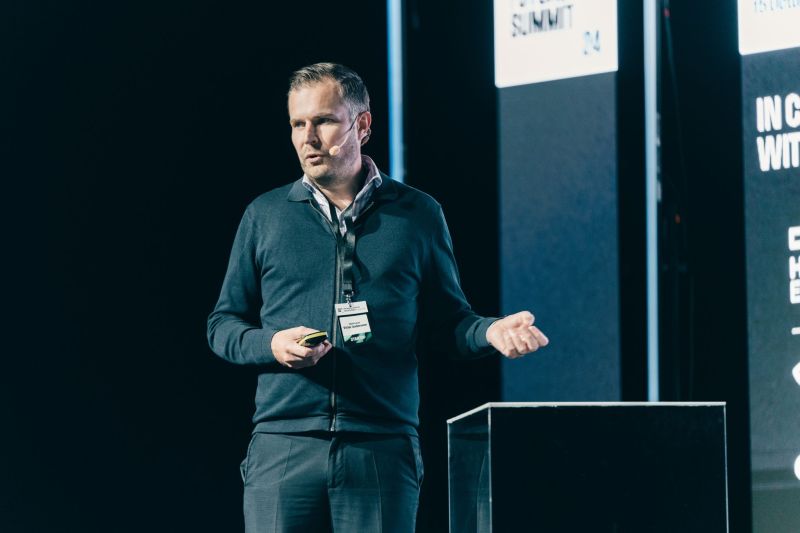Building trust and traceability into SwePass
When discussions turn to digital product passports, the conversation often circles around regulation, technology, and market readiness. But Chaintraced brings another dimension to the table: the hard-earned experience of making digital traceability work in complex, global value chains.
For Chaintraced, joining SwePass isn’t about theory. It’s about taking lessons from the metals industry—where supply chains stretch across continents and questions of ownership, data integrity, and standards are far from simple—and applying them in a way that accelerates learning for everyone involved.
– The transformation of the metallic value chain towards greater transparency and traceability is a major journey that will require considerable time and substantial resources. Initiatives like SwePass show the value of working together, providing a common platform to build awareness and trust, demonstrate new solutions, and accelerate the transition, says Daniel Eriksson Pitt, CCO at ChainTraced.
Standards as a foundation
When asked about the most critical technical building block for product passports, Daniel Eriksson Pitt points straight to standards.
– A key condition is having common standards for data and data exchange. Beyond that, we need technology that allows information to be shared in ways that create value for all actors, regardless of size or position in the value chain. This is about scalable platforms, but also about recognizing that the needs and value gains differ between, say, a global corporation and a smaller supplier.
He continues :
– Companies must feel confident that they own and control their data, and that sharing takes place in ways that make sense for their business. We need to be realistic and pragmatic, in finding solutions that work both for how data is shared today and for the new possibilities that standards and new technology will enable in the future.
Regulation as a catalyst
If the biggest challenge so far has been uncertainty—particularly around legislation—there are now signs of clarity.
– One of the greatest challenges in our value chain is the combination of regulatory uncertainty and high complexity. That makes value capture less obvious or quick compared to other value chains and initiatives. At the same time, we now see a clearer direction in legislation, both in terms of timeline and priorities, where for example steel and aluminium are identified as prioritized intermediate product groups
According to Daniel Eriksson Pitt, that clarity is opening doors.
– It creates a sense of direction and a market dynamic where more actors see opportunities to engage. We already see many signals of rapidly growing interest as these frameworks are defined.
Moving forward together
Ultimately, Chaintraced’s contribution to SwePass is about making sure no company has to take small, isolated steps alone.
– Our ambition is to integrate our traceability initiatives into SwePass as the market matures, to the extent it is relevant. In this way, we can help move development forward on a broader front – where the industry moves together, rather than individual actors taking small steps on their own.
A final project output will include test results on the durability and performance of data carriers and a practical guide for industry stakeholders on how to integrate these tools into their processes.
Tackling real challenges across sectors
By working in parallel across industries, SwePass can both highlight the differences and identify common ground. The project helps build a broader understanding of digital product passports and generates insights that are valuable far beyond a single sector.
Challenges differ across value chains. For the metals industry, which Chaintraced is part of, a key issue is that product marking for metallic materials has yet to be solved. There is also uncertainty about which data points should actually be included and how access to them should be managed throughout the value chain. On top of this comes a lack of clarity around the regulatory timeline, where multiple product categories will gradually be added for downstream industries.
In the textile sector for example, SwePass and its partners face another set of challenges. Here, durable marking and tags that can withstand washing, wear, and long-term storage are critical. There is also a need for clear guidelines on how data should be structured, shared, and aligned with upcoming requirements from EU regulation.
Supporting future regulation and scaling
In both metals and textiles, crucial questions remain before digital product passports can be fully implemented in practice. For metals, solutions are needed for product marking, agreement on which data points to include, and clarity on the regulatory timeline. For textiles, the focus is on durable marking, data sharing, and preparing for new EU regulations that are just around the corner.
SwePass provides a forum where these perspectives can come together. The project tests and evaluates solutions in practice – from data carriers in textiles to interoperability in metals – and shares insights with the industry. In this way, it supports companies in preparing for future EU regulation while also accelerating the development of scalable systems that can be applied across sectors.
